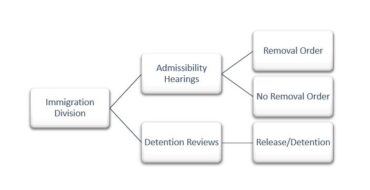Immigration Detention, the Grounds for Detention, Mandatory Factors and the Release Plan
There was welcome news and developments concerning Canada’s troubling use of provincial jails to house foreign nationals including refugee claimants in Canada. Ontario has announced that it will stop allowing the Federal Government to use its jails for immigration detainees. It will take effect in a year, but it’s a development long awaited by stakeholders.
From the Toronto Star:
Canada’s use of maximum-security provincial jails to hold immigration detainees — who are not charged with a crime or serving a sentence, but can be detained indefinitely — has for years drawn condemnation from human rights organizations, including the United Nations.
…
It was the subject of a recent Toronto Star investigation, which found more than 80 per cent of immigration detainees held in Ontario’s jails last year were detained solely on the grounds they were “unlikely to appear” for their deportation, not because they were considered dangerous.
In more than half of the five dozen cases reviewed by the Star, detainees had reported mental health issues, and they were often subject to punishing conditions, including frequent lockdowns and solitary confinement.
The basis most utilized to justify detention was that the foreign national/person concerned was unlikely to appear or is a flight risk.
A foreign national (and at times even a PR) can be detained if the Officer is of the opinion that they are inadmissible and there is concerns regarding identity, danger, or flight.
The CBSA can order release on terms and conditions within the first 48 hours otherwise the matter is remitted for review at the Immigration Division (the Immigration Division is responsible for holding admissibility hearings and detention reviews).
Detention is reviewed periodically.
Remember:
- Chairperson Guideline 2: Detention is essentially required reading for practitioners;
- Default should be release (remember, some of those detained have never committed a crime; they are there because an Officer thinks that they may do something in the future);
- ID shall order release unless satisfied under s.58(1) that person concerned is danger to the public and/or flight risk and/or Minister taking reasonable steps to inquire into reasonable suspicion that person concerned is inadmissible on s.34/35/36/37 and/or Minister of opinion that identity has not been but may be established and they have not reasonably cooperated or the Minister has made reasonable efforts to establish identity.
- The onus or burden is always on the MC to demonstrate the reasons for detention or continued detention.
The FCA in Brown confirmed the onus, or burden, remains at all times on the minister and never shifts during a detention review or at subsequent reviews. Moreover, the burden on the minister increases with the passage of time and each successive detention review. The FCA’s full ratio was provided at paragraphs 118-135, which held in its most pertinent part:
[122] The legal burden does not shift or change should the Minister establish a prima facie case of grounds for detention. The detainee is not required in law to do anything.
If ground of detention is established (and it is counsel’s job and duty to ensure that there is in fact evidence supporting same and addressing same) then the ID must consider factors set out in R248 before making a final decision to release/detain (reason for detention; length of time in detention; existence of alternatives to detention). Counsel must put forth a comprehensive release plan which often includes a bondsperson.



